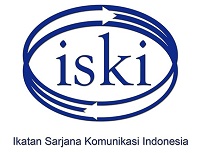Nonverbal Expectancy Violation Theory: Esensi dan Perkembangannya
Abstract
harapan tersebut dilanggar, maka orang akan bereaksi dengan memberikan penilaian
positif atau negatif sesuai karakteristik pelaku pelanggaran tersebut. Blla klta menyukai orang tersebut maka besar kemungkinan kita akan menerima pelanggaran
tersebut sebagai sesuatu yang wajar dan menilainya secara positif. Seballknya bila
sumber pelanggaran dipersepsi tidak menarik atau kita tidak menyukainya maka klta
akan menilai pelanggaran tersebut sebagai sesuatu yang negatif.
Keywords
Full Text:
PDF (Bahasa Indonesia)References
Andersen, Peter A. 2002. "Influential Actions: Nonverbal Communication and Persuasion." Makalah. School of Communication, San Diego
State University USA.
Burgoon, Judee K. 1978. "A Communication Model of Personal Space Violations: Explication and Initial Test," Human Communication Research, 4,129-124.
Burgoon, lK.& lL. Hale. 1988. "Nonverbal Expectancy Violations: Model Elaboration and Application to Immediacy Behaviors." Communication
Monograph, 55, 58-79.
Gudykunst, William B., S. Ting Tomey, & T.Nishida.( 1996). Communication in Personal Relationship Accross Culture. London: Thousand Oaks.
Littlejohn, S.W. 1996. Theories ofHuman Communication, Fifth Edition. Belmont CA: Wadsworth.
Neuliep, James W. 2000. Intercultural Communication: a Contextual Approach, USA: Houghton Mifflin Company.
Ting Tomey, S. & Leeva Chung. 1996. "Cross Cultural Interpersonal Communication" dalam Gudykunst, William B., S. Ting Tomey, &
T.Nishida. (1996). Communication in Personal Relationship Accross Culture. London: Thousand Oaks.
Wise, Matt. 2002. "Expectancy Violation Theory." Makalah (data tidak lengkap) Wood, Julia T. (llj'-)7). Communication in Our Lives. Belmont
CA : Wadsworth PC.
DOI: https://doi.org/10.29313/mediator.v4i2.1027
Refbacks
- There are currently no refbacks.

This work is licensed under a Creative Commons Attribution 4.0 International License























